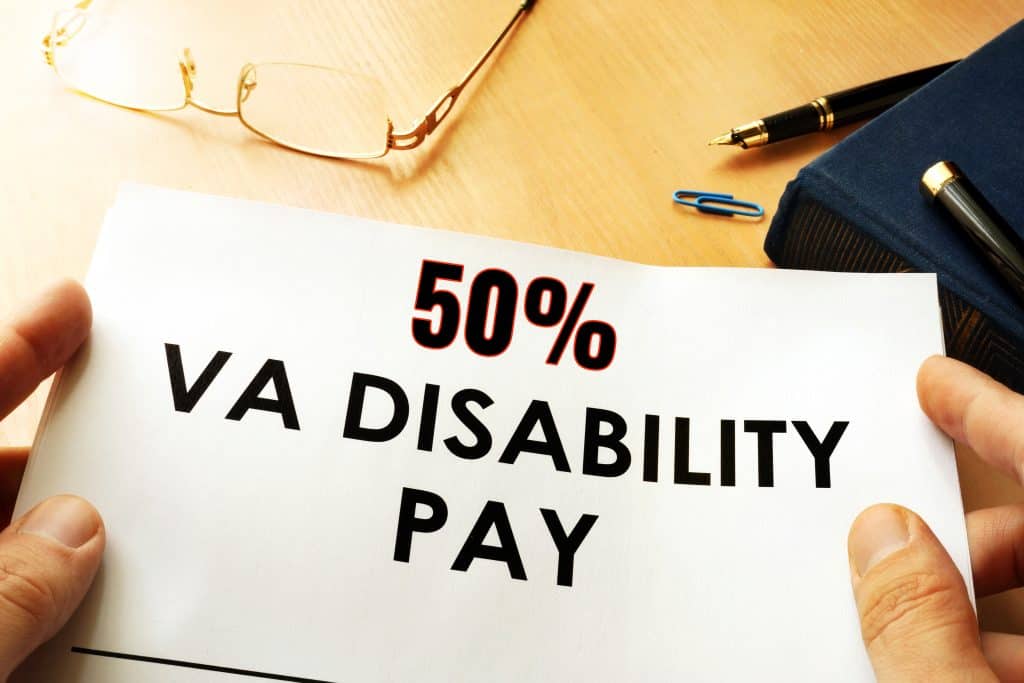Looking for Expert-Level VA Claim Answers?📱Call Us Now! 737-295-2226
If you’re reading this, you have either already scheduled and pass C&P exam for ptsd benefits or you are considering filing a claim, and you’re probably wondering what you can expect during the VA medical exam.
Well, you came to the right place! We’ve put together a comprehensive breakdown so you know just what to expect when you walk into that exam.
- What’s a CP Exam for PTSD Benefits?
- Statistics About PTSD
- VA Ratings for PTSD
- What to Expect at a CP Exam for PTSD
- DSM-V Criteria
- Criteria A: Stressor (At least 1 required)
- Criteria B: Intrusion Symptoms (At least 1 required)
- Criteria C: Avoidance
- Criteria D: Negative Changes to Mood and Thoughts (At least 2 required)
- Criteria E: Differences in Arousal and Reactivity
- Criteria F: The Duration of Symptoms (Required)
- Criteria G: Functional Significance (Required)
- Criteria H: Exclusion (Required)
- DSM-V Criteria
- What to Say at a PTSD Exam
- Other Prep for Your CP Exam for PTSD Benefits
- About the Author
What’s a CP Exam for PTSD Benefits?
CP stands for “Compensation and Pension”. Once you file a claim for PTSD, the VA will schedule a CP exam for VA benefits for you to undergo. This exam is to verify the diagnosis of PTSD, even if you already have another diagnosis from a medical professional.
This exam is mandatory in order to have your claim approved. It will determine if your PTSD is service-related and will assess the severity of your condition. We recommend making it to this scheduled exam no matter what!
The information gathered by the VA examiner will be passed on to the official VA raters who decide the fate of your claim. In reality, there isn’t a “pass/fail” system in place. You are assigned a rating based on the individual factors of your claim and how effectively you are able to communicate the impact on your life.
For the best possible outcome, you need to be prepared and that’s what this article will help you do.
Statistics About PTSD
Many veterans are diagnosed with PTSD, so please know that you’re not alone. In fact:
- About 11 to 20 out of every 100 veterans (or between 11% and 20%) who served in operations Iraqi Freedom and Enduring Freedom have PTSD each year.
- About 12 out of every 100 Gulf War Veterans (or 12%) have PTSD each year.
- About 15 out of every 100 Vietnam veterans (15%) were diagnosed with PTSD when the most recent study (the National Vietnam Veteran Readjustment Study) was conducted in the late 1980s. It’s believed that 30% of Vietnam veterans have had PTSD in their lifetime.
According to the VBA’s statistics reported to Congress, PTSD was the #3 most commonly claimed VA disability, with 1,753,091 veterans (of 4,743,108) receiving VA compensation for having a service-connected PTSD VA disability rating at 0 percent or higher.

With these shocking statistics, you can believe that the VA is used to treating veterans for PTSD and granting them benefits. The key for you is to know how to communicate the status of your condition in the best possible way. This will empower your examiner to present the strongest case on your behalf to the VA raters.
VA Ratings for PTSD
It’s possible to be rated for PTSD anywhere from 0% (where the VA recognizes the diagnosis but no benefits are awarded) to 100% (the VA recognizes the condition is completely disabling and awards the highest amount of benefits).
Most veterans are rated as follows:
- 37,868 veterans (2.2% of claimants) have a 0 percent VA rating for PTSD.
- 125,056 veterans (7.1%) have a 10 percent VA rating for PTSD.
- 416,056 veterans (23.7%) have a 30 percent PTSD VA Rating.
- 453,980 veterans (25.9%) have a 50 percent PTSD rating.
- 490,339 veterans (28%) have a 70 percent VA disability rating for PTSD.
- 229,792 veterans (13.1%) have a 100 percent VA disability rating for PTSD
This means that the vast majority of veterans with PTSD are rated at 30% or higher, making your chances of receiving a high rating fairly strong if your symptoms and condition warrant it. Being armed with this knowledge and well-prepared for your CP exam for PTSD benefits will be key in getting the rating you deserve.
What to Expect at a CP Exam for PTSD
Generally speaking, a CP exam for VA benefits is very similar to a normal doctor’s appointment. The difference is that they are not only looking for a diagnosis and treatment option, but are also seeking to understand the beginning of your condition in relation to your time of military service.

Also, because they are looking for reasons to assign you benefits, your examiner will be looking for specific details to determine the severity of your PTSD condition.
It is true that CP examiners review thousands of veterans per year. Therefore they may not have the time, patience, or resources to spend a lot of time digging into your case. This is why you should be prepared to be as clear and specific as possible during your exam time.
Many veterans do not get the benefits they deserve because they leave out details during their CP exam. The more you disclose to the examiner, the better your chances of getting a higher rating. This really is your time to be vulnerable and tell your story.
Remember, the CP examiner’s opinion is often what the VA considers most persuasive when rating your claim.
In deciding your diagnosis, the VA uses criteria from the DSM-V (Diagnostic and Statistical Manual of Mental Disorders, Fifth Edition). You must meet all of the criteria to be validly diagnosed. This is why it is so important to document all of your symptoms!
The examiner will ask you questions related to your stressors, symptoms, history with the condition, and your service-connection to it. Familiarize yourself with the DSM-V criterion below and be prepared to address them honestly and accurately as they relate to your military service.
DSM-V Criteria
The following criterion are exactly what the CP examiner will be looking for in order to validate your PTSD condition.
Criteria A: Stressor (At least 1 required)
Were you exposed to threatened death, actual or threatened injury, or actual or threatened sexual violence during your time in the military through:

- Direct exposure
- Witnessing trauma
- Learning that a relative or close friend was exposed to a trauma
- Indirect exposure to details of the trauma
Criteria B: Intrusion Symptoms (At least 1 required)
This is where you are persistently reliving the trauma through either:
- Unwanted memories
- Nightmares
- Flashbacks
- Physical reactivity to reminders
- Emotional distress to reminders
Criteria C: Avoidance
Criteria D: Negative Changes to Mood and Thoughts (At least 2 required)
Since the stressor occurred, have you had negative thoughts or feelings that either started or became worse? For instance:
- Trouble recalling aspects of the trauma
- Very negative thoughts and assumptions about yourself and the world
- Exaggerated blaming of yourself or others for trauma
- Decreased interest in other activities
- Feelings of isolation
- Difficulty experiencing positive feelings or thoughts
Criteria E: Differences in Arousal and Reactivity
Are you more irritable or aggressive? Has your behavior become risky or destructive? Do you have difficulty concentrating or sleeping?
Criteria F: The Duration of Symptoms (Required)
Must have been experienced for over a month.
Criteria G: Functional Significance (Required)
This means that your symptoms impair you or create distress in social and occupational areas.
Criteria H: Exclusion (Required)
This means that your symptoms are not caused by medication, illness, or substance use.
What to Say at a PTSD Exam
Now that you know what the CP examiner is looking for, you can begin to prepare correctly for your exam.
Don’t Say…
You’re doing good or “alright”. Every little thing you say can be recorded during your CP exam for PTSD benefits. The entire point of the exam is to prove that you are not doing alright! This doesn’t mean to lie, it just means to be honest about your symptoms and how you are struggling.
Veterans frequently gloss-over how bad things are when they talk to people. Sometimes it’s just social niceties, but oftentimes it’s the old, “suck it up, solider!” attitude rearing it’s head. Don’t do that here! This exam is your time to spill all the ugly details about your condition and it’s effect on your life. It’s important that you don’t downplay what you are experiencing.
Keep the discussion about your condition and avoid wandering into topics about unrelated circumstances or things in your life that may be going well.
Do Say…
Every detail you possibly can about your symptoms and the history of your condition. Some symptoms are more important to remember than others, and knowing what the VA is looking for will help you know how to describe your condition.
The VA rates PTSD in the following ways:
- 0%- A mental health condition has been formally diagnosed, but symptoms are not severe enough either to interfere with occupational and social functioning or to require continuous medication.
- 10%- Occupational and social impairment due to mild or transient symptoms which decrease work efficiency and ability to perform occupational tasks only during periods of significant stress, or symptoms controlled by continuous medication.
- 30%– Occupational and social impairment with occasional decrease in work efficiency and intermittent periods of inability to perform occupational tasks, due to such symptoms as: depressed mood, anxiety, suspiciousness, panic attacks, chronic sleep impairment, mild memory loss
- 50%– Occupational and social impairment with reduced reliability and productivity due to such symptoms as: circumstantial, circumlocutory, or stereotyped speech; panic attacks more than once a week; difficulty in understanding complex commands; impairment of short- and long-term memory; impaired judgment; impaired abstract thinking; disturbances of motivation and mood; difficulty in establishing and maintaining effective work and social relationships.
- 70%– Occupational and social impairment, with deficiencies in most areas, such as work, school, family relations, judgment, thinking, or mood, due to such symptoms as: suicidal ideation; obsessional rituals which interfere with routine activities; speech intermittently illogical, obscure, or irrelevant; near-continuous panic or depression affecting the ability to function independently, appropriately and effectively; impaired impulse control; spatial disorientation; neglect of personal appearance and hygiene; difficulty in adapting to stressful circumstances; inability to establish and maintain effective relationships.
- 100%– Total occupational and social impairment, due to such symptoms as: gross impairment in thought processes or communication; persistent delusions or hallucinations; grossly inappropriate behavior; persistent danger of hurting self or others; intermittent inability to perform activities of daily living; disorientation to time or place; memory loss for names of close relatives, own occupation, or own name.

By understanding how the VA rates PTSD, you can better understand how to communicate your condition to the CP examiner to receive a more accurate rating from the VA.
Other Prep for Your CP Exam for PTSD Benefits
Other tips for having a great CP exam for PTSD benefits are to review all of your previous medical records prior to your exam. They may contain important details from your long-forgotten past that are relevant today. Also, have a detailed description of PTSD’s effect on your life at-the-ready. And it can be very helpful to have someone fill out a letter of support for you (a “buddy letter”) on VA Form 21-4138.
As a mental disorder, PTSD can be very tough to diagnose objectively. Therefore, the more evidence you have from witnesses to support you, the better your case to the examiner.
Finally, you may want to check out these articles to better prepare for your VA C&P exam, and to ensure you file the strongest claim possible for PTSD.
And if you still don’t feel confident, we have a great team of VA Insiders ready to assist you!
About the Author

About VA Claims Insider
VA Claims Insider is an education-based coaching/consulting company. We’re here for disabled veterans exploring eligibility for increased VA disability benefits and who wish to learn more about that process. We also connect veterans with independent medical professionals in our referral network for medical examinations, disability evaluations, and credible independent medical opinions and nexus statements (medical nexus letters) for a wide range of disability conditions.



